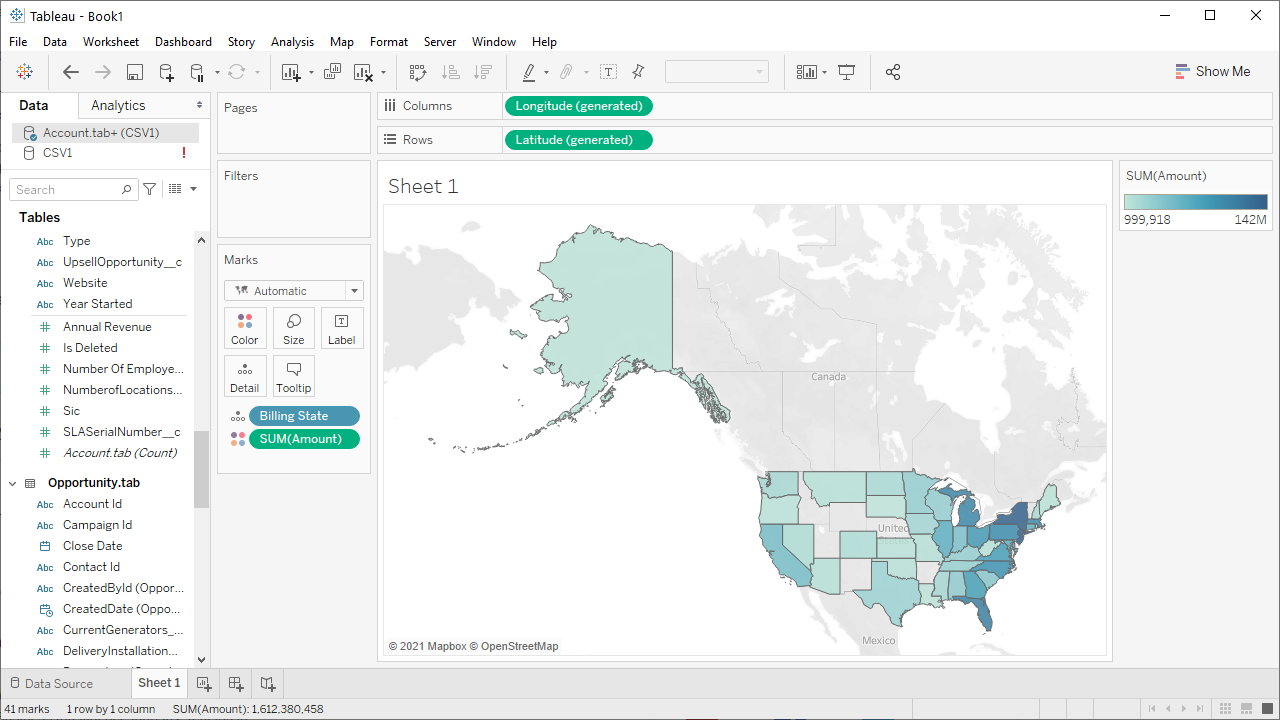Discover how a bimodal integration strategy can address the major data management challenges facing your organization today.
Get the Report →Visualize Asana Data in Tableau Desktop (through CData Connect)
Create a virtual SQL Server database for Asana data in CData Connect (or Connect Server) and build visualizations from live Asana data in Tableau Desktop.
Tableau is a visual analytics platform transforming the way businesses use data to solve problems. When paired with CData Connect (or Connect Server), you can easily get access to live Asana data within Tableau.
CData Connect Server provides a pure SQL Server interface for Asana, allowing you to easily build reports from live Asana data in Tableau Desktop — without replicating the data to a natively supported database. As you build visualizations, Tableau Desktop generates SQL queries to gather data. Using optimized data processing out of the box, CData Connect Server pushes all supported SQL operations (filters, JOINs, etc) directly to Asana, leveraging server-side processing to quickly return the requested Asana data.
This article shows how to create a virtual SQL Server database for Asana, connect to the virtual database in Tableau, and build a simple chart.
Create a Virtual SQL Server Database for Asana Data
CData Connect Server uses a straightforward, point-and-click interface to connect to data sources and generate APIs.
-
Login to Connect Server and click Connections.
![Adding a connection]()
- Select "Asana" from Available Data Sources.
-
Enter the necessary authentication properties to connect to Asana.
You can optionally set the following to refine the data returned from Asana.
- WorkspaceId: Set this to the globally unique identifier (gid) associated with your Asana Workspace to only return projects from the specified workspace. To get your workspace id, navigate to https://app.asana.com/api/1.0/workspaces while logged into Asana. This displays a JSON object containing your workspace name and Id.
- ProjectId: Set this to the globally unique identifier (gid) associated with your Asana Project to only return data mapped under the specified project. Project IDs can be found in the URL of your project's Overview page. This will be the numbers directly after /0/.
Connect Using OAuth Authentication
You must use OAuth to authenticate with Asana. OAuth requires the authenticating user to interact with Asana using the browser. See the "Getting Started" chapter of the help documentation for a guide to using OAuth.
![Configuring a connection (SQL Server is shown).]()
- Click Save Changes
- Click Privileges -> Add and add the new user (or an existing user) with the appropriate permissions.
With the virtual database created, you are ready to connect to Asana data from Tableau Desktop.
Visualize Live Asana Data in Tableau Desktop
The steps below outline connecting to the virtual Asana database in CData Connect and building a simple visualization from the data.
- Open Tableau and click "Microsoft SQL Server" under Connect -> To a Server.
- In the connection wizard, enter the values for your CData Connect instance and click "Sign In"
- Server: the address of your Connect instance and port of the TDS endpoint, separated by a comma (default port is: 1433)
- Database: the virtual database you configured for the Asana data
- Username & Password: the credentials for a CData Connect user
![Connect to CData Connect from Tableau Desktop]()
- Select your newly created database and the table(s) you wish to visualize (defining relationships for JOINed tables as needed).
- Select Dimensions and Measures and configure your visualization.


SQL Access to Asana Data from On-Premise Applications
At this point, you have a direct connection to live Asana data from your Tableau Desktop workbook. You can create new visualizations, build dashboards, and more. For more information on gaining SQL access to data from more than 200 SaaS, Big Data, and NoSQL sources (including Asana) from desktop applications like Tableau refer to our CData Connect page or download a free trial.









